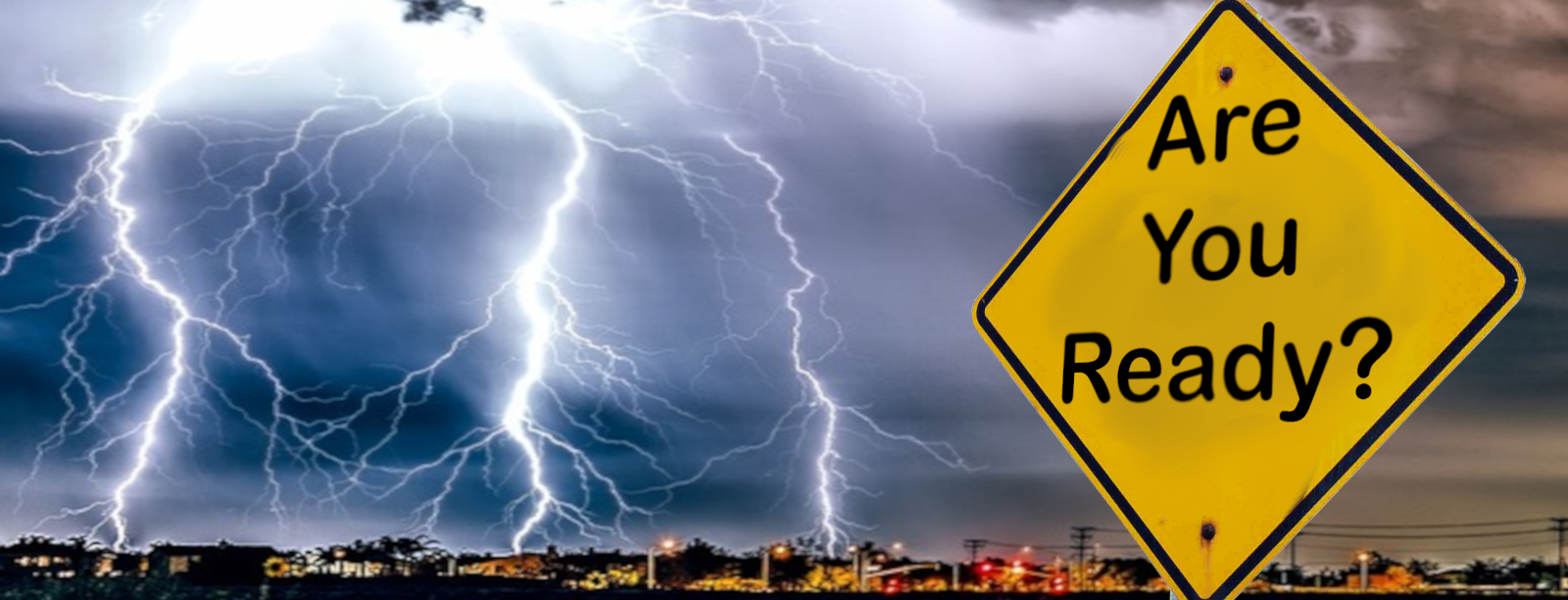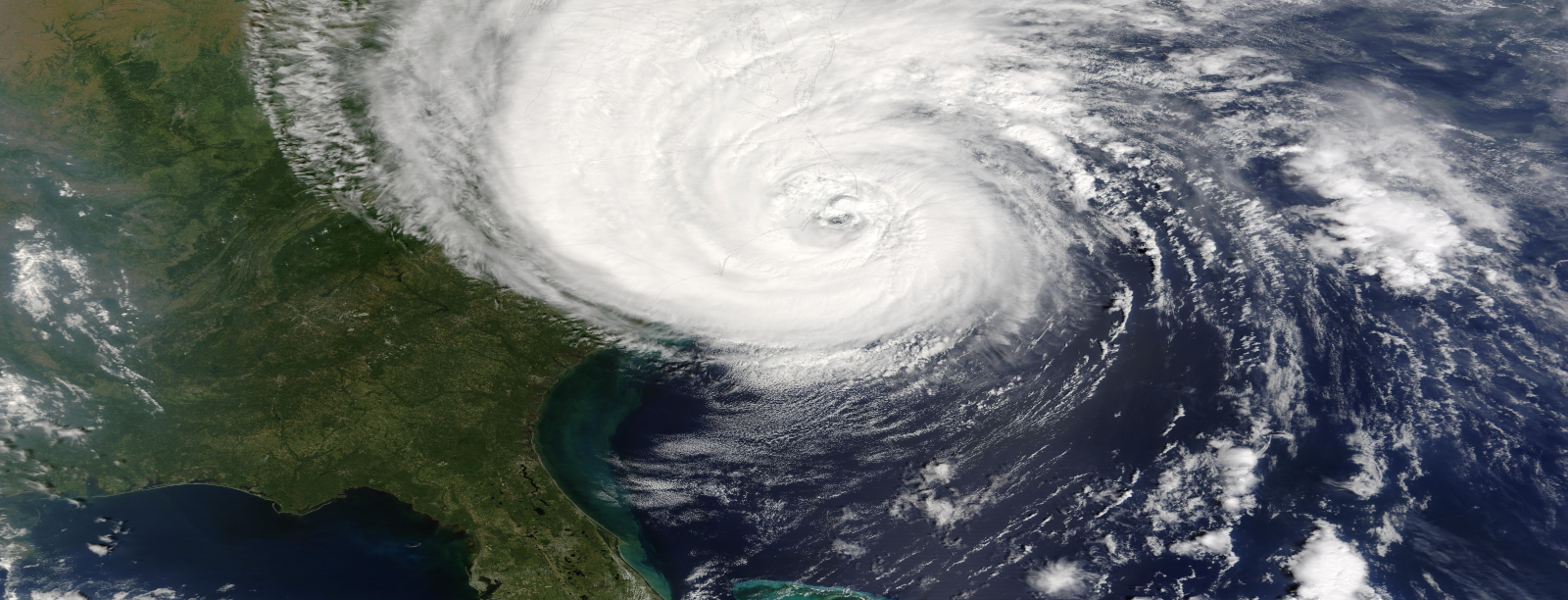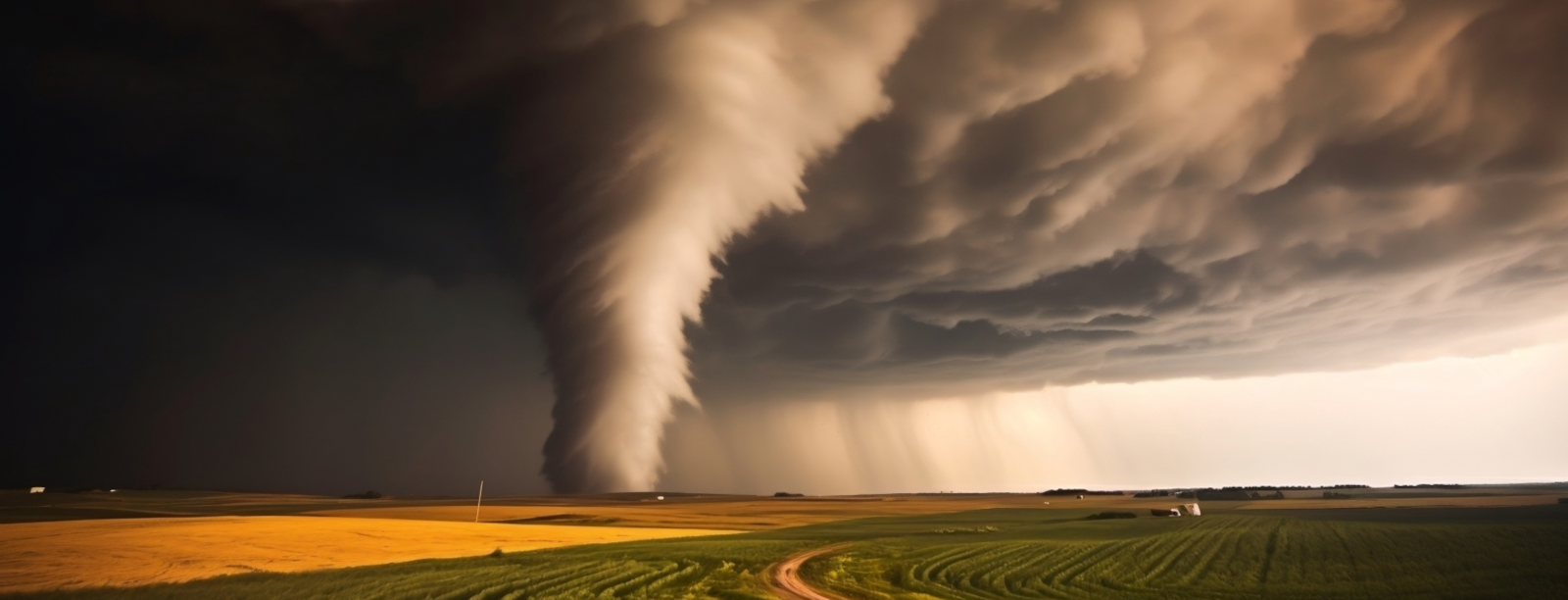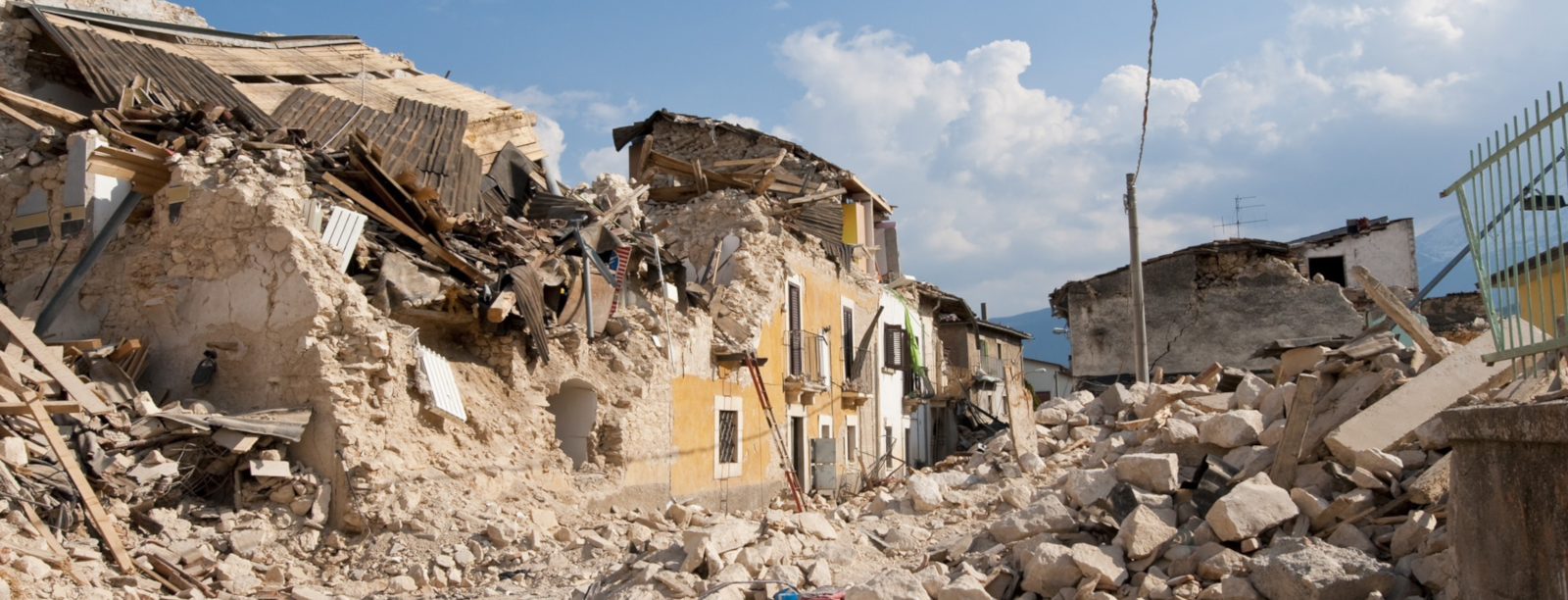"Go-Kit" Essentials: How to build your kit
In the face of unexpected emergencies or natural disasters, having a well-prepared go-kit can be a lifeline for you and your loved ones. A go-kit, also known as a bug-out bag or emergency kit, is a carefully curated collection of items that are essential for survival and comfort during challenging situations. Building your go-kit requires thoughtful consideration of your specific needs, the potential emergencies you might face, and the well-being of every member of your household, including pets.
In this guide, we’ll walk you through the key components of a comprehensive go-kit and offer practical insights on how to tailor it to your unique circumstances. From essential supplies for sustenance and safety to items that address personal hygiene, medical needs, and even the well-being of your furry friends, we’ll cover it all. Remember, a well-prepared go-kit not only provides peace of mind but also ensures you are ready to face the unexpected with resilience and resourcefulness. Let’s dive into the essentials and guide you on how to build a go-kit that suits your emergency preparedness needs.
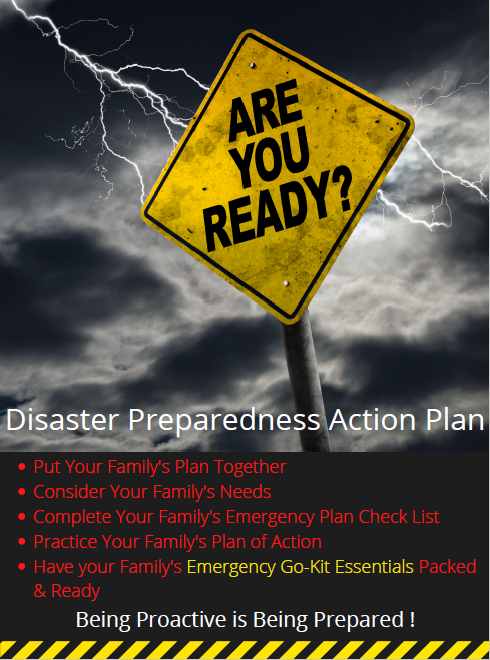
In the context of an emergency go-kit or bug-out bag, a container serves as the vessel to hold and organize all the essential items you might need during an emergency or evacuation situation. The choice of a suitable container is crucial as it determines the portability, durability, and weather resistance of your emergency kit. Here are some key considerations for the container:
Portability: The container should be easy to carry, ideally in the form of a backpack or duffle bag. This ensures that you can quickly grab your kit and move to a safer location without hindrance.
Durability: The container should be made of sturdy and durable materials to withstand the rigors of transportation, handling, and exposure to different weather conditions. Look for reinforced seams and quality zippers.
Water Resistance: It’s essential that the container provides some level of water resistance to protect your emergency supplies from rain or other sources of moisture. Consider using waterproof bags or liners for added protection.
Size and Capacity: The container should be large enough to hold all necessary items but not so large that it becomes cumbersome to carry. Consider the needs of all individuals in your household when determining the size of the container.
Accessibility: Choose a container with multiple compartments or pockets to help you organize your supplies. This makes it easier to access specific items quickly without having to rummage through the entire kit.
Visibility: Opt for a container with a bright color or reflective strips to enhance visibility, especially in low-light conditions or emergencies where visibility is reduced.
Comfort: If you have to carry the container for an extended period, ensure that it has comfortable straps and padding to reduce strain on your back and shoulders.
By carefully selecting a suitable container, you can ensure that your emergency go-kit is not only well-organized and easily accessible but also durable enough to withstand the challenges of an emergency situation. Regularly check the condition of the container and its contents to ensure that everything remains in working order.
Including documentation in your emergency go-kit serves several important purposes. In times of crisis or evacuation, having access to essential documents can help facilitate communication, ensure your well-being, and aid in recovery efforts. Here’s why documentation is important and what specific items you should consider including:
Identification:
- Personal Identification: Copies of your driver’s license, passport, and any other identification cards. These can be crucial for proving identity and accessing certain services.
Emergency Contacts:
- Contact List: A list of emergency contacts, including family members, friends, neighbors, and healthcare providers. Make sure to include both local and out-of-town contacts.
Medical Information:
- Medical Records: Copies of important medical information, including prescriptions, allergies, and a list of medications for each family member. This information is vital for healthcare providers in case of injury or illness.
Insurance Information:
- Insurance Policies: Copies of health insurance, homeowners/renters insurance, and any other relevant insurance policies. This information will be essential for filing claims in the event of property damage or medical emergencies.
Financial Information:
- Cash: Include some cash in small denominations, as ATMs and card machines may not be accessible during emergencies.
- Credit Cards: Copies of front and back of credit/debit cards. This can be useful if your cards are lost or stolen.
Legal Documents:
- Legal Papers: Copies of important legal documents, such as wills, deeds, and power of attorney documents. These documents can be crucial for legal and financial matters.
Home Inventory:
- Inventory List: A list of valuable possessions, including serial numbers and photographs. This can be useful for insurance claims in the event of property damage or loss.
Local Maps and Evacuation Routes:
- Maps: Local maps and evacuation routes specific to your area. Familiarize yourself with these routes in advance.
Technology Information:
- Technology Details: A list of important information about your devices, such as serial numbers and contact information for technical support. This can be helpful if you need to replace or repair electronics.
Important Legal Papers:
- Legal Documents: Copies of wills, trusts, and other legal documents. These are crucial for legal and financial matters.
Ensure that all documentation is stored in a waterproof and secure container within your emergency go-kit. Periodically review and update the information to reflect any changes in your personal or family situation. Keep the documents in a place where they can be easily accessed when needed.
Communication tools and devices are essential components of an emergency go-kit because they enable you to stay informed, connect with others, and request assistance during a crisis. Here are some key communication items to include in your emergency go-kit:
Mobile Phone:
- A fully charged mobile phone is a critical tool for communication during emergencies. Make sure to include a portable charger or a power bank to keep your phone charged.
Emergency Radio:
- A battery-powered or hand-crank emergency radio can provide you with crucial information, such as weather updates, emergency alerts, and official instructions. Look for a radio that can receive NOAA Weather Radio broadcasts.
Chargers and Cables:
- Pack charging cables for your mobile phone and any other electronic devices you carry. Consider including a multi-USB charger to charge multiple devices simultaneously if you have access to a power source.
Emergency Whistle:
- An emergency whistle can be a simple yet effective tool for signaling for help if needed. It’s a loud and attention-grabbing tool that can assist in alerting others to your location.
Notepad and Pen:
- Having a notepad and pen in your kit allows you to leave messages, record important information, or communicate when verbal communication is not possible.
Emergency Contacts List:
- Write down a list of important emergency contacts, including family members, friends, neighbors, and local authorities. Having this information on hand can be useful if your mobile phone is lost or not functioning.
Local Maps:
- Include local maps in your kit, especially if you are not familiar with the area. Maps can help you navigate evacuation routes and find essential locations like emergency shelters.
Communication Plan:
- Develop a communication plan with your family or group. Specify meeting points, contact persons, and alternative communication methods. Share this plan with all members to ensure everyone is on the same page.
Portable Wi-Fi Hotspot (if applicable):
- In some situations, having a portable Wi-Fi hotspot may be beneficial for accessing the internet and communicating with others online. Ensure it is fully charged and includes the necessary cables.
Emergency Apps:
- Install emergency apps on your mobile phone, such as those provided by local emergency management agencies. These apps can provide real-time alerts, weather updates, and other critical information.
Cash:
- While not a communication tool per se, having some cash on hand is essential. In emergencies, electronic payment systems may be unavailable, so cash can be used to purchase goods and services.
Remember to periodically check the functionality of these communication tools and update your emergency go-kit as needed. Being prepared with reliable communication resources can greatly contribute to your safety and the well-being of those around you during an emergency.
A first aid kit is a crucial component of an emergency go-kit as it provides the necessary supplies to administer basic medical care in the immediate aftermath of an emergency or during evacuation. Here’s why a first aid kit is important in an emergency go-kit:
Immediate Care for Injuries:
- A first aid kit contains essential items such as bandages, sterile gauze, adhesive tape, and antiseptic wipes, which can be used to clean and dress wounds. These supplies help address injuries and prevent infection.
Pain Relief:
- Pain relievers such as acetaminophen or ibuprofen are often included in a first aid kit. These can help alleviate pain and discomfort caused by injuries or other medical conditions.
Treatment for Minor Ailments:
- The kit may include over-the-counter medications for common ailments such as allergies, headaches, or stomachaches, providing relief until further medical assistance is available.
Medical Tools:
- Basic medical tools like scissors, tweezers, and a thermometer can be included in a first aid kit. These tools are helpful for various situations, such as cutting bandages, removing splinters, and monitoring body temperature.
Burn Treatment:
- Items like burn ointment or gel can be included to provide immediate treatment for minor burns. It’s important to address burns promptly to minimize damage and prevent infection.
CPR Mask:
- In the event of a medical emergency requiring cardiopulmonary resuscitation (CPR), a CPR mask included in the first aid kit can help provide a barrier between the responder and the person receiving CPR.
Emergency Blanket:
- Some first aid kits include emergency blankets, which can be used to keep individuals warm in case of exposure to the elements.
Latex Gloves:
- Disposable latex or nitrile gloves are essential for protecting both the caregiver and the injured or ill person from potential contamination.
First Aid Manual:
- A basic first aid manual or instruction booklet can be included to provide guidance on administering first aid in various situations. This is especially helpful for individuals who may not have extensive first aid training.
Personal Medications:
- If you or anyone in your family has specific medical conditions, it’s advisable to include a small supply of necessary prescription medications in the first aid kit.
Tourniquet and Hemostatic Agent (optional):
- Depending on your level of first aid training and the nature of potential emergencies, you might consider including a tourniquet and hemostatic agent to address severe bleeding.
Regularly check the contents of your first aid kit to ensure that items are not expired, and replace any used or missing supplies. Additionally, consider tailoring your first aid kit to the specific needs of your family and any potential emergency scenarios in your area.
Water and water purification items are critical components of an emergency go-kit because access to clean and safe drinking water is essential for survival. Here’s why water and water purification are important, and what items you might include in your emergency go-kit:
Hydration:
- Adequate hydration is crucial for maintaining health, especially during emergencies when physical exertion and stress levels may be elevated. Having a supply of water ensures that you and your family can stay hydrated until additional water sources are available.
Clean Water Supply:
- In the aftermath of a natural disaster or emergency, local water sources may be contaminated. Having a supply of clean water in your emergency kit helps you avoid drinking unsafe water that could lead to waterborne illnesses.
Water Purification:
- Including water purification methods in your emergency go-kit allows you to treat water from potentially contaminated sources, making it safe for consumption. Common water purification methods include water purification tablets, water filters, and purification drops.
Water Purification Tablets:
- These tablets typically contain chlorine or iodine and are designed to kill bacteria, viruses, and parasites in water. Follow the instructions on the packaging for proper use.
Water Filters:
- Portable water filters, such as those with built-in filters or straw-like devices, can be effective in removing impurities and contaminants from water. Some filters can even remove bacteria and protozoa.
Purification Drops:
- Liquid purification drops, often based on chlorine or iodine, can be added to water to kill harmful microorganisms. They are convenient and portable for on-the-go water treatment.
Collapsible Water Container:
- Having a collapsible water container allows you to collect and store water from available sources. It’s important to have a container that is durable, leak-proof, and easy to transport.
Water Storage Bags:
- Compact water storage bags can be useful for carrying and storing water. They are lightweight and take up minimal space in your go-kit.
Waterproof Packaging:
- Ensure that all water-related items are stored in waterproof packaging to prevent contamination and to protect them from the elements.
Water Purification Instructions:
- Include instructions on water purification methods in your kit, especially if you’re not familiar with the specific product you’ve included. This ensures proper and effective use.
Remember to periodically check the expiration dates on water purification tablets and drops, and replace them as needed. Also, regularly rotate the water stored in your emergency go-kit to ensure freshness. The amount of water you store in your kit depends on factors such as the number of people in your household and the expected duration of the emergency. The general recommendation is to have at least one gallon of water per person per day for a minimum of three days.
Food in an emergency go-kit serves as a crucial source of sustenance during situations where regular access to food may be disrupted. The primary purposes of including food in your emergency go-kit are:
Sustenance and Energy:
- Emergency situations, such as natural disasters or evacuations, can be physically demanding. Having non-perishable, easily accessible food provides the energy needed to sustain yourself and your family during these challenging times.
Nutrition:
- Emergency go-kits typically include non-perishable, nutritionally dense foods that can help meet essential dietary needs. These foods may include items like energy bars, dried fruits, nuts, and other nutrient-rich options.
Convenience:
- Non-perishable and easy-to-prepare food items are convenient for situations where cooking facilities may be unavailable. This ensures that you can quickly access and consume food without the need for extensive preparation.
Comfort and Morale:
- Familiar and comforting foods can have a positive impact on morale during stressful times. Including items that you and your family enjoy can provide a sense of normalcy and comfort in an otherwise challenging situation.
Emergency Rations:
- In situations where access to regular meals is uncertain, having emergency rations can help ensure a stable food supply until more sustainable options become available.
Special Dietary Needs:
- Consider the specific dietary needs and preferences of your family members when selecting food items for your go-kit. Include items suitable for individuals with allergies or dietary restrictions.
Extended Stay:
- Your emergency go-kit may need to sustain you and your family for an extended period if evacuation or access to regular food sources is prolonged. Having an ample supply of non-perishable food ensures you are prepared for various scenarios.
Children and Infants:
- If you have infants or young children, include baby formula, baby food, and other age-appropriate items in your emergency go-kit to meet their nutritional needs.
Common types of food items to include in your emergency go-kit are:
- Energy Bars: Compact and high in calories.
- Dried Fruits and Nuts: Nutrient-dense and non-perishable.
- Canned Goods: Non-perishable options that can be eaten without cooking.
- Cereal or Granola: Can be eaten with or without milk.
- Dehydrated Meals: Lightweight and easy to prepare with water.
- Peanut Butter or Nut Butters: Good source of protein and healthy fats.
- Crackers or Rice Cakes: Portable and easy to store.
- Canned Protein (Tuna, Chicken): Good source of protein.
- Instant Oatmeal: Requires minimal preparation with hot water.
Ensure that the food items are within their expiration dates and periodically rotate them to maintain freshness. Consider dietary restrictions, preferences, and the number of individuals in your household when selecting and packing food for your emergency go-kit.
Including appropriate clothing in your emergency go-kit is important for ensuring your comfort, safety, and protection during various emergency situations. The type of clothing you pack depends on factors such as the climate, the season, and the specific needs of your family. Here’s why clothing is a crucial component of an emergency go-kit:
Protection from the Elements:
- Clothing provides a layer of protection against adverse weather conditions such as rain, wind, and extreme temperatures. Including weather-appropriate clothing helps you stay warm and dry in challenging environments.
Adaptation to Changing Conditions:
- Emergency situations can lead to unpredictable weather changes. Packing a variety of clothing items allows you to adapt to different conditions, whether it’s getting colder in the evening or unexpectedly raining.
Comfort during Evacuation:
- Comfortable clothing is essential, especially if you need to evacuate or travel for an extended period. Choose lightweight, breathable fabrics for warm climates and layerable options for colder temperatures.
Footwear:
- Sturdy and comfortable walking shoes or boots are crucial for evacuation scenarios. If you need to walk long distances or navigate uneven terrain, appropriate footwear can prevent foot injuries and discomfort.
Identification and Visibility:
- Brightly colored or reflective clothing can enhance your visibility, making it easier for rescuers or others to spot you, especially in low-light conditions.
Protection from Insects and Sun Exposure:
- Long-sleeved shirts, long pants, and hats can protect against insect bites and sun exposure. This is particularly important if you find yourself outdoors for an extended period.
Specialized Clothing:
- Consider any specific needs of individuals in your family, such as infants, elderly family members, or individuals with medical conditions. Include items like baby clothes, extra layers for warmth, or specialized clothing for those with specific requirements.
Hygiene and Personal Comfort:
- Including extra underwear, socks, and personal hygiene items in your emergency go-kit can contribute to your overall comfort and well-being during a crisis.
Common clothing items to include in your emergency go-kit are:
- Weather-Appropriate Outerwear: Jackets, coats, or ponchos depending on the climate.
- Long-Sleeved Shirts and Pants: Protects against insects, sun, and other environmental elements.
- Sturdy Walking Shoes or Boots: Comfortable footwear suitable for walking long distances.
- Hats: Provide protection from the sun.
- Gloves: Useful for protection, warmth, and handling various items.
- Extra Underwear and Socks: Maintain personal hygiene and comfort.
- Seasonal Accessories: Consider items like scarves, gloves, or hats based on the season.
Remember to consider the needs of each family member and adjust the clothing items accordingly. Regularly review and update the clothing in your emergency go-kit to ensure it is seasonally appropriate and in good condition.
Shelter and bedding items in an emergency go-kit are essential for providing protection, warmth, and a comfortable rest environment during emergencies or evacuation situations. Here’s why shelter and bedding are important and what items you might include in your emergency go-kit:
Shelter:
Protection from the Elements:
- Shelter items, such as a compact tent or emergency shelter, provide protection from rain, wind, and other adverse weather conditions. This is crucial for maintaining your health and well-being during an emergency.
Privacy and Security:
- Having a portable shelter can offer a degree of privacy and security, especially in crowded or unfamiliar environments.
Warmth:
- A shelter helps retain body heat, providing warmth during cold weather conditions or at night.
Rest and Recovery:
- A designated shelter space allows for rest and recovery, which is essential during emergencies when physical and mental stress can be high.
Versatility:
- Portable shelters, such as lightweight tents or emergency blankets, are versatile and can be set up quickly in various environments.
Bedding:
Comfort:
- Bedding items, such as sleeping bags or blankets, contribute to comfort and a sense of normalcy during challenging circumstances.
Insulation:
- Sleeping bags provide insulation against the cold, helping to retain body heat and maintain a comfortable sleeping temperature.
Hygiene:
- Having a designated sleeping bag or bedding helps maintain personal hygiene, especially in situations where clean bedding may be scarce.
Compact and Lightweight:
- Emergency bedding is designed to be compact and lightweight, making it easy to include in your go-kit without adding excessive weight.
Multi-Purpose Use:
- Blankets or sleeping bags can also be used for additional warmth or as makeshift padding in emergency situations.
Common Shelter and Bedding Items:
Emergency Shelter:
- Compact tent, tarp, or emergency space blanket for protection against the elements.
Sleeping Bag:
- Insulated sleeping bag appropriate for the climate you may encounter.
Sleeping Pad or Mat:
- Provides insulation from the ground and adds comfort.
Compact Pillow:
- Inflatable or compressible pillows for added comfort during rest.
Portable Hammock:
- Lightweight and versatile, providing an elevated sleeping option.
Compact Bivouac Sack:
- A small, lightweight shelter that can also be used as a sleeping bag cover.
Ground Cloth or Tarp:
- Offers additional protection from damp or uneven ground.
Mosquito Netting:
- Provides protection against insects in areas where they may be a concern.
Emergency Blankets:
- Reflective blankets that can be used for warmth or as a makeshift shelter.
Tent Stakes and Guy Lines:
- Essential for securing tents or tarps in various terrains.
Remember to consider the specific needs of your family members, the climate of your region, and the potential challenges you might face when selecting and packing shelter and bedding items in your emergency go-kit. Regularly check and update these items to ensure they remain in good condition and are suitable for the current season.
Tools and supplies in an emergency go-kit are essential for various tasks and situations that may arise during emergencies or evacuation scenarios. These items can help you address basic needs, handle minor repairs, and enhance your overall preparedness. Here’s why tools and supplies are important in an emergency go-kit:
Self-Sufficiency:
- Including a variety of tools and supplies in your go-kit allows you to be more self-sufficient. You can address basic needs without relying solely on external assistance.
Emergency Repairs:
- Basic tools can be used for emergency repairs to clothing, gear, or shelter. This can be especially useful if you need to improvise solutions in the absence of professional help.
Versatility:
- Multi-tools and versatile supplies can serve multiple purposes, making them valuable in different situations.
Resourcefulness:
- Having tools and supplies fosters a sense of resourcefulness, enabling you to adapt to unexpected challenges or limitations.
Communication and Signaling:
- Certain tools, such as a whistle or signaling mirror, can be used for communication and attracting attention in emergencies.
Comfort and Safety:
- Some tools and supplies contribute to your overall comfort and safety during challenging circumstances.
Common Tools and Supplies to Include:
Multi-Tool:
- A compact, multi-functional tool that includes features such as pliers, knife, screwdriver, and more.
Knife:
- A sturdy, versatile knife can be useful for various tasks, including cutting rope, opening packages, or preparing food.
Flashlight:
- A durable flashlight with extra batteries for illumination in low-light conditions.
Duct Tape:
- A versatile and strong adhesive that can be used for temporary repairs, sealing, or securing items.
Rope or Paracord:
- Strong and versatile, rope can be used for building shelters, securing items, or creating makeshift solutions.
Tarp:
- A compact and lightweight tarp can provide additional shelter, protection, or ground cover.
Small Notepad and Pen:
- Useful for taking notes, leaving messages, or recording important information.
Scissors:
- Small, sharp scissors for cutting bandages, clothing, or other materials.
Safety Whistle:
- A loud whistle for signaling and attracting attention in emergency situations.
N95 Masks:
- Masks can provide protection from dust, smoke, or airborne particles in certain emergency situations.
Work Gloves:
- Sturdy gloves to protect your hands during tasks that may involve debris or rough surfaces.
Crank or Battery-Powered Radio:
- A portable radio for receiving emergency alerts and staying informed about the situation.
Waterproof Matches or Lighter:
- Reliable fire-starting tools for warmth, cooking, or signaling.
Small Fire Starter:
- Compact fire starters, such as magnesium fire starters or waterproof fire sticks.
Small Pry Bar or Crowbar:
- For opening doors, windows, or containers if necessary.
Compact Folding Shovel:
- A small shovel can be useful for digging, clearing debris, or building makeshift shelters.
Plastic Bags:
- Versatile for collecting and carrying items, organizing, or disposing of waste.
Sanitation Supplies:
- Personal hygiene items, including wet wipes, toilet paper, and hand sanitizer.
Towels or Bandanas:
- Multipurpose items for cleaning, drying, or as makeshift head coverings.
Compact Sewing Kit:
- Basic sewing supplies for repairing clothing or gear.
Customize your tool and supplies selection based on your specific needs, the types of emergencies prevalent in your area, and the number of people in your household. Regularly check and update these items to ensure they are in good working condition.
Including personal hygiene items in an emergency go-kit is essential for maintaining health, cleanliness, and overall well-being during challenging situations. Proper personal hygiene can help prevent the spread of illness, boost morale, and contribute to a sense of normalcy in emergency scenarios. Here’s why personal hygiene items are important in an emergency go-kit:
Health and Sanitation:
- Personal hygiene items help maintain cleanliness, reducing the risk of infection and promoting overall health.
Comfort and Well-Being:
- Basic personal hygiene can significantly contribute to your comfort and well-being during stressful times.
Preventing the Spread of Illness:
- Hand hygiene and other personal care practices can help prevent the spread of germs, particularly in crowded or shared spaces during emergencies.
Boosting Morale:
- Feeling clean and refreshed can have a positive impact on mental well-being and morale, which is important during emergencies.
Maintaining Dignity:
- Access to personal hygiene items allows individuals to maintain a sense of dignity and self-respect in challenging circumstances.
Common Personal Hygiene Items to Include:
Toothbrush and Toothpaste:
- Oral hygiene is important for overall health and comfort.
Soap or Body Wash:
- Cleaning the body helps prevent infections and contributes to a sense of cleanliness.
Shampoo and Conditioner:
- Hair care items for cleanliness and comfort.
Deodorant:
- Helps control body odor, contributing to personal comfort.
Wet Wipes or Baby Wipes:
- Convenient for quick clean-ups when access to water is limited.
Hand Sanitizer:
- Alcohol-based hand sanitizer helps kill germs when soap and water are not readily available.
Menstrual Hygiene Products:
- Tampons, pads, or menstrual cups for individuals who menstruate.
Disposable Razors:
- For maintaining personal grooming and cleanliness.
Sunscreen:
- Protects the skin from harmful UV rays, especially in outdoor or exposed situations.
Lip Balm:
- Prevents dry and chapped lips, especially in challenging weather conditions.
Tissues or Toilet Paper:
- Essential for personal hygiene and sanitation.
Compact Towel or Washcloth:
- Quick-drying and compact towels for personal care.
Feminine Hygiene Products:
- Personal care items for individuals with specific needs.
Nail Clippers:
- Maintaining short and clean nails contributes to overall hygiene.
Prescription Glasses or Contact Lenses:
- Essential for individuals with vision correction needs.
First Aid Supplies:
- Include basic first aid items such as bandages, antiseptic wipes, and any necessary medications.
Personal Medications:
- A supply of any prescription or over-the-counter medications needed for specific medical conditions.
Insect Repellent:
- Helps prevent insect bites and potential infections.
Remember to consider the specific needs of each family member, including any infants, elderly family members, or individuals with medical conditions, when selecting and packing personal hygiene items in your emergency go-kit. Regularly check and update these items to ensure they are in good condition and within their expiration dates.
Including cash in an emergency go-kit is a practical and important step for several reasons. While electronic forms of payment are prevalent in daily life, there are situations during emergencies where having physical cash becomes invaluable. Here’s why cash is useful in an emergency go-kit:
Limited Access to ATMs:
- During emergencies, power outages, infrastructure damage, or other disruptions may limit access to ATMs and electronic banking services. Having cash on hand ensures that you can make essential purchases even when electronic payment methods are unavailable.
Immediate Necessities:
- In the aftermath of a disaster or evacuation, you may need to purchase immediate necessities such as food, water, or essential supplies. Cash allows you to do so quickly and efficiently.
Local Businesses and Services:
- Some local businesses, especially smaller ones, may continue to operate during emergencies and may only accept cash transactions. Having cash provides you with the flexibility to buy goods and services from these establishments.
Transportation:
- In certain situations, public transportation or private services may still be available. Cash can be used to pay for transportation services, whether it’s a taxi, bus, or other means of getting to a safer location.
Emergency Expenses:
- Unexpected expenses or urgent needs may arise during emergencies. Cash allows you to address these needs promptly without relying on electronic transactions.
Bartering:
- In some emergency scenarios, bartering may become a form of trade. Having cash can be useful in such situations to facilitate exchanges or transactions.
Gifts or Donations:
- If you encounter a situation where offering financial assistance, donations, or gifts to others is necessary or helpful, having cash readily available allows you to contribute.
Privacy and Security:
- Cash transactions can be more private than electronic transactions, and in certain situations, maintaining privacy may be a consideration.
Tips for Including Cash in Your Emergency Go-Kit:
Amount:
- Include a reasonable amount of cash in small denominations. Consider the needs of your household and potential expenses during emergencies.
Denominations:
- Use a variety of denominations, including smaller bills, to make transactions more convenient.
Secure Storage:
- Keep the cash in a waterproof container or a secure pouch within your go-kit to protect it from damage.
Regular Updates:
- Periodically check and update the amount of cash in your go-kit to ensure it remains adequate and is in good condition.
Emergency Coins:
- Including some coins in your kit can be helpful, especially for situations where exact change may be required.
Local Currency:
- If you are in an area prone to emergencies or disasters, it may be useful to include some local currency in your go-kit.
Remember to keep the amount of cash in your emergency go-kit within a reasonable and manageable range. Additionally, consider the potential risks associated with carrying large amounts of cash and take appropriate precautions for its security.
Special needs items in an emergency go-kit are crucial because they address the unique requirements of individuals with specific medical conditions, disabilities, or other exceptional needs. Including these items ensures that everyone in your household, including those with special needs, can maintain their health, safety, and overall well-being during emergencies or evacuation scenarios. Here’s why special needs items are important in an emergency go-kit:
Continuity of Care:
- Special needs items help ensure the continuity of care for individuals with specific medical conditions. This includes having the necessary medications, medical equipment, and supplies to manage their health effectively.
Emergency Medications:
- Individuals with chronic medical conditions often rely on specific medications. Including a supply of these medications in the go-kit ensures that they have access to what they need during emergencies when obtaining prescription refills may be challenging.
Medical Equipment:
- Some individuals may require special medical equipment such as hearing aids, mobility devices, or respiratory aids. Including these items in the go-kit is essential for their well-being.
Communication Devices:
- Individuals with communication needs, such as those who are non-verbal or have hearing impairments, may require specific communication devices or tools. Including these items ensures effective communication during emergencies.
Assistive Technology:
- Specialized tools or devices that assist individuals with disabilities in their daily activities should be included. This might include items like a magnifying glass, talking watch, or any assistive technology that enhances their independence.
Comfort Items:
- Personal comfort items, such as sensory objects or familiar items, can be crucial for individuals with cognitive or emotional needs. These items provide comfort and a sense of familiarity during stressful times.
Emergency Plan Documentation:
- Individuals with special needs often have unique emergency plans tailored to their requirements. Including documentation of these plans in the go-kit ensures that caregivers, emergency responders, or others are aware of specific needs and how to address them.
Examples of Special Needs Items:
Prescription Medications:
- Ensure an adequate supply of any prescription medications needed for specific medical conditions.
Medical Equipment:
- Include items such as hearing aids, mobility aids, respiratory devices, or any specialized medical equipment.
Communication Devices:
- Devices or tools for individuals with communication needs, such as picture communication boards, text-to-speech devices, or hearing aids.
Comfort Items:
- Items that provide comfort or sensory stimulation, such as stress balls, fidget toys, or comforting blankets.
Specialized Clothing or Bedding:
- Clothing or bedding tailored to specific needs, such as adaptive clothing or pressure-relieving cushions.
Personal Care Items:
- Items for personal care, including diapers, wipes, or hygiene products tailored to individual needs.
Emergency Plan Documentation:
- Include copies of emergency plans, medical records, and contact information for healthcare providers.
Assistive Technology:
- Tools or devices that assist with daily tasks, such as magnifiers, adaptive keyboards, or voice-activated devices.
Identification and Medical Information:
- Copies of identification, medical records, and any relevant information that may be needed during emergencies.
Communication Cards:
- Cards or documents that provide information about an individual’s needs, preferences, and communication methods.
It’s important to regularly review and update the special needs items in the go-kit to ensure they remain relevant and meet the evolving needs of individuals with special requirements. Communicate with healthcare providers, caregivers, and emergency responders to gather additional guidance on the specific needs of individuals with disabilities or medical conditions.
Including entertainment and comfort items in an emergency go-kit may seem like a non-essential luxury, but they play a significant role in supporting mental well-being during stressful situations. Here’s why entertainment and comfort items are necessary in an emergency go-kit:
Psychological Well-Being:
- Emergency situations can be emotionally challenging and stressful. Having familiar items, such as a favorite book or game, can provide comfort and a sense of normalcy, positively impacting psychological well-being.
Distraction and Relaxation:
- Entertainment items, such as books, puzzles, or games, offer a distraction from the immediate stress of an emergency. Engaging in activities that provide a mental break can be important for maintaining a sense of calm.
Occupying Time:
- In situations where individuals may need to wait for extended periods, having entertainment items helps pass the time. This is especially important for families with children, as boredom can exacerbate stress.
Children’s Comfort:
- Including toys, games, or comfort items for children is crucial. Familiar toys can provide a sense of security and comfort during uncertain times.
Promoting Social Interaction:
- Board games or card games can encourage social interaction among family members or groups, fostering a sense of connection and support.
Stress Reduction:
- Entertainment and comfort items contribute to stress reduction by offering a positive and enjoyable outlet for individuals to focus on during challenging moments.
Examples of Entertainment and Comfort Items:
Books:
- Reading materials, including favorite books or novels, can provide an escape and a source of comfort.
Games:
- Board games, card games, or travel-sized games for entertainment and social interaction.
Puzzles:
- Jigsaw puzzles or crossword puzzles for mental stimulation and relaxation.
Music:
- Portable music players with headphones or a small instrument for creating music.
Art Supplies:
- Coloring books, sketch pads, or small art supplies for creative expression and stress relief.
Comfort Objects:
- Comfort items such as a favorite stuffed animal or blanket, especially for children.
Favorite Snacks:
- Non-perishable comfort foods or snacks that provide familiarity and satisfaction.
Deck of Cards:
- A versatile item that can be used for various card games and entertainment.
Portable Electronic Devices:
- Devices like e-readers, tablets, or portable gaming devices with pre-loaded content.
Headphones:
- For listening to music, podcasts, or audio books without disturbing others.
Journal or Notebook:
- A journal or notebook for writing down thoughts, feelings, or important information.
Personal Letters or Photos:
- Letters from loved ones, family photos, or personal mementos can offer emotional support.
Sensory Items:
- Items that engage the senses, such as stress balls, scented items, or sensory toys.
Portable Comfort:
- Inflatable travel pillows or small cushions for added comfort during rest.
While the primary focus of an emergency go-kit is on practical and survival-oriented items, the inclusion of entertainment and comfort items recognizes the importance of holistic well-being. These items can be particularly beneficial during prolonged emergencies or evacuations when individuals may experience extended periods of stress and uncertainty. Customize the selection of entertainment and comfort items based on the preferences and needs of your family members.
Important documents are a crucial component of an emergency go-kit because they provide essential information and documentation needed to navigate through and recover from various emergency situations. These documents can be vital for ensuring your safety, accessing resources, and facilitating communication with authorities and service providers. Here’s why important documents are necessary in an emergency go-kit:
Identification and Verification:
- Important documents, such as government-issued identification (ID), passports, and driver’s licenses, are crucial for verifying your identity. They may be required for accessing emergency shelters, medical services, or other assistance.
Medical Information:
- Including medical records, health insurance cards, and a list of medications in your go-kit ensures that medical professionals have access to essential information if you or a family member requires medical attention during an emergency.
Emergency Contacts:
- A list of emergency contacts, including family members, friends, and healthcare providers, facilitates communication with loved ones and helps authorities contact individuals in case of an emergency.
Financial Information:
- Documents such as credit cards, bank account information, and insurance policies are necessary for accessing financial resources and handling emergency expenses.
Legal Documents:
- Important legal documents, such as wills, power of attorney, and property deeds, provide clarity about your wishes and legal status, especially in situations where legal matters may need to be addressed.
Insurance Policies:
- Copies of insurance policies (home, auto, health, etc.) are essential for processing claims and obtaining coverage during and after an emergency.
Proof of Residence:
- Documents establishing your residence, such as utility bills or lease agreements, may be required for accessing certain services or resources.
Vaccination Records:
- In certain situations, proof of vaccinations may be necessary, especially if you are seeking shelter or traveling across borders.
Vehicle Documents:
- Copies of vehicle registration, insurance, and maintenance records are important if you need to use or recover your vehicle during or after an emergency.
School Records:
- For families with children, including copies of school records, report cards, and contact information for schools can be useful for enrollment in new educational institutions.
Communication Devices:
- Information about your communication devices, including serial numbers and contact information for service providers, can assist in restoring or replacing lost or damaged devices.
Examples of Important Documents to Include:
Government-Issued ID:
- Driver’s license, passport, or state ID.
Medical Records:
- Copies of medical records, health insurance cards, and a list of medications.
Emergency Contacts:
- A list of emergency contacts, including family members, friends, and healthcare providers.
Financial Information:
- Credit cards, bank account information, and cash.
Legal Documents:
- Wills, power of attorney, and any other legal documents.
Insurance Policies:
- Copies of insurance policies (home, auto, health, etc.).
Proof of Residence:
- Utility bills, lease agreements, or other documents establishing residence.
Vaccination Records:
- Copies of vaccination records for all family members.
Vehicle Documents:
- Vehicle registration, insurance, and maintenance records.
Communication Device Information:
- Serial numbers and contact information for communication devices.
School Records:
- Copies of school records, report cards, and contact information for schools.
Other Relevant Documents:
- Any other documents specific to your situation, such as custody agreements or pet ownership documentation.
Store these documents in a waterproof and secure container within your emergency go-kit. Consider creating digital copies of important documents and storing them on a secure, password-protected USB drive or in cloud storage. Regularly review and update the documents to ensure that the information is current and accurate.
Seasonal items are important in an emergency go-kit because they help you adapt to and address specific weather and environmental conditions that may vary throughout the year. Including seasonal items ensures that your go-kit is well-suited to the climate and challenges you may face during different seasons. Here’s why seasonal items are important in an emergency go-kit:
Climate-Specific Needs:
- Different seasons bring varying weather conditions, such as extreme heat, cold, rain, or snow. Seasonal items help you address specific climate-related needs and challenges.
Comfort and Safety:
- Having the right seasonal items ensures your comfort and safety during emergencies, considering factors like temperature, precipitation, and sunlight exposure.
Preparation for Seasonal Hazards:
- Seasonal items can help you prepare for hazards specific to certain times of the year, such as hurricanes, wildfires, floods, or winter storms.
Adaptation to Environmental Changes:
- Seasonal changes may affect the availability of resources, transportation, and other factors. Including items that help you adapt to these changes is crucial for preparedness.
Preventing Weather-Related Illnesses:
- Seasonal items like sunscreen, insect repellent, or cold weather gear can prevent weather-related illnesses or discomfort.
Examples of Seasonal Items to Include:
Summer (Hot Weather):
- Sunscreen with high SPF.
- Lightweight and breathable clothing.
- Wide-brimmed hat for sun protection.
- Sunglasses to protect eyes from UV rays.
- Portable fan or cooling towel.
- Hydration supplies, such as water bottles.
- Insect repellent.
Winter (Cold Weather):
- Insulated clothing, including jackets and layers.
- Warm blankets or sleeping bags.
- Hand warmers and body warmers.
- Thermal gloves, hats, and scarves.
- Snow or winter boots.
- Ice scraper for vehicles.
- Snow shovel.
Rainy Season:
- Waterproof rain jacket or poncho.
- Waterproof footwear, such as rain boots.
- Compact umbrella.
- Waterproof bags or containers.
- Water-resistant cover for the go-kit.
- Towels for drying off.
Hurricane or Storm Season:
- Waterproof and windproof clothing.
- Emergency rain gear.
- Flashlights and waterproof batteries.
- Stormproof matches or lighters.
- Tarps or emergency shelter.
- Portable weather radio.
Spring (Variable Weather):
- Allergy medications.
- Umbrella for unexpected showers.
- Lightweight jacket or layers for changing temperatures.
- Hat for sun protection.
- Gardening gloves if applicable.
- Waterproof shoes for muddy conditions.
Fall (Cooler Temperatures):
- Insulating layers for warmth.
- Wind-resistant jacket.
- Hat and gloves for cool evenings.
- Portable light sources for early darkness.
- Comfort items for relaxation.
Remember to tailor your seasonal items based on the climate of your region and the potential emergencies you might encounter. Regularly review and update your go-kit to ensure that the seasonal items are in good condition and suitable for the current season.
Personal identification is crucial in an emergency go-kit because it provides essential information that can be vital for your safety, security, and access to necessary resources during and after an emergency. Including personal identification ensures that you can establish your identity, communicate important details, and navigate through various situations effectively. Here’s why personal identification is important in an emergency go-kit:
Verification of Identity:
- Government-issued identification documents, such as driver’s licenses, passports, or state IDs, are essential for verifying your identity. This can be crucial when accessing emergency shelters, medical services, or other assistance.
Emergency Contacts:
- Personal identification often includes emergency contact information. Having this information readily available helps authorities or medical professionals reach out to your loved ones in case of an emergency.
Medical Information:
- Personal identification may include information about your blood type, allergies, or other medical conditions. This information is vital for healthcare providers during emergencies.
Legal Documentation:
- Certain forms of personal identification, such as driver’s licenses, may include legal information about you. This can be important in legal matters that may arise during or after an emergency.
Access to Financial Resources:
- Credit cards, bank cards, and other forms of personal identification linked to financial accounts are necessary for accessing financial resources and handling emergency expenses.
Communication with Authorities:
- Personal identification allows you to communicate effectively with authorities, law enforcement, or emergency responders. It establishes your identity and facilitates clear communication in stressful situations.
Recovery and Rebuilding:
- In the aftermath of a disaster, personal identification is often required for various recovery and rebuilding processes, including insurance claims, access to temporary housing, and other essential services.
Examples of Personal Identification to Include:
Government-Issued ID:
- Driver’s license, passport, state ID, or any other government-issued identification.
Emergency Contacts:
- A list of emergency contacts, including family members, friends, and healthcare providers.
Medical Information:
- Information about allergies, blood type, and any other relevant medical details.
Legal Documents:
- Copies of important legal documents, such as wills, power of attorney, and custody agreements.
Insurance Cards:
- Health insurance cards, dental insurance cards, and any other insurance information.
Financial Information:
- Copies of credit cards, bank cards, and any other relevant financial documentation.
Vehicle Documentation:
- Driver’s license, vehicle registration, and insurance information.
Communication Device Information:
- Serial numbers and contact information for communication devices.
Other Relevant Documents:
- Any other documents that establish your identity, legal status, or personal circumstances.
Personal Identification Cards:
- Personal ID cards issued by employers, schools, or other organizations.
It’s essential to store personal identification documents securely within your emergency go-kit. Consider using a waterproof and fire-resistant container to protect these documents from damage. Additionally, regularly review and update the information in your go-kit to ensure that it remains accurate and relevant.
Including pet supplies in an emergency go-kit is crucial because it ensures the well-being, safety, and care of your pets during emergencies or evacuation situations. Pets are members of the family, and considering their needs in your emergency preparedness efforts is essential for their health and your peace of mind. Here’s why pet supplies are important in an emergency go-kit:
Sustaining Health and Nutrition:
- Adequate food and water supplies tailored to your pet’s needs ensure they receive proper nutrition and hydration during an emergency when their regular food supply may be disrupted.
Comfort and Familiarity:
- Including familiar items such as favorite toys, blankets, or comfort objects helps reduce stress and provides a sense of familiarity for pets during the upheaval of an emergency.
Medical Care:
- Pet first aid supplies, medications, and medical records are essential for addressing your pet’s health needs. Having these items can be crucial if your pet requires immediate medical attention.
Identification:
- Pet identification, including collars with ID tags and microchips, helps ensure that you and your pet can be reunited if you become separated during an emergency.
Hygiene and Sanitation:
- Pet hygiene items, such as waste bags, litter, and grooming supplies, contribute to maintaining cleanliness and sanitation for your pet in emergency situations.
Transportation and Restraint:
- Carriers or crates are essential for transporting pets safely, especially if evacuation is necessary. Additionally, having a leash or harness ensures you can safely restrain and control your pet.
Temperature Considerations:
- Depending on the season, include items such as a pet coat or cooling vest to help your pet adapt to temperature changes during emergencies.
Examples of Pet Supplies to Include:
Pet Food and Water:
- A sufficient supply of pet food and water for at least several days.
Food and Water Bowls:
- Lightweight and portable bowls for feeding and watering your pet.
Pet Medications:
- Any necessary medications your pet may need, along with a copy of their medical records.
Pet First Aid Kit:
- First aid supplies designed for pets, including bandages, antiseptic wipes, and tweezers.
Pet Identification:
- Collar with an ID tag containing your contact information and a microchip if applicable.
Comfort Items:
- Favorite toys, blankets, or comfort objects to provide familiarity and reduce stress.
Pet Carrier or Crate:
- A portable and comfortable carrier or crate for safe transportation.
Leash or Harness:
- A sturdy leash or harness to safely restrain and control your pet.
Hygiene Supplies:
- Waste bags, litter, grooming supplies, and other hygiene items.
Temperature-Appropriate Gear:
- Seasonally appropriate items such as a pet coat, cooling vest, or paw protection.
Paper Towels and Cleaning Supplies:
- Towels or wipes for cleaning your pet and their living space.
Vet Information:
- Contact information for your veterinarian and any necessary documentation.
Emergency Pet Shelter Information:
- Information about nearby pet-friendly shelters or accommodations.
List of Pet Emergency Contacts:
- A list of emergency contacts who can assist with your pet’s care.
By including pet supplies in your emergency go-kit, you are better equipped to care for your pets and ensure their safety and well-being during challenging circumstances. Regularly check and update these supplies to ensure they remain in good condition and are suitable for your pets’ current needs.
Sanitation supplies are crucial in an emergency go-kit because they help maintain hygiene, prevent the spread of illnesses, and ensure a safe and clean environment during challenging situations. In emergencies, access to basic sanitation facilities may be limited, making it essential to have the necessary supplies to address personal and environmental hygiene needs. Here’s why sanitation supplies are important in an emergency go-kit:
Disease Prevention:
- Good sanitation practices help prevent the spread of diseases and infections. Including hygiene supplies in your go-kit contributes to overall health and reduces the risk of illness during emergencies.
Comfort and Well-Being:
- Access to sanitation supplies provides comfort and contributes to a sense of well-being, especially during situations where regular hygiene routines may be disrupted.
Personal Hygiene:
- Sanitation supplies allow you to maintain personal hygiene, including handwashing, oral care, and general cleanliness. This is crucial for preventing the spread of germs and maintaining health.
Environmental Cleanliness:
- Having supplies for cleaning surfaces and environments helps create a safe and sanitary space, reducing the risk of contamination and promoting overall safety.
Waste Management:
- Adequate sanitation supplies assist in managing waste, including the proper disposal of trash and human waste. This is crucial for preventing environmental pollution and maintaining a clean living space.
Emergency Shelter Hygiene:
- If you find yourself in an emergency shelter, having personal sanitation supplies ensures you can maintain hygiene in shared facilities and promotes a healthier living environment for everyone.
Adaptation to Limited Resources:
- In situations where access to running water and traditional sanitation facilities is limited, sanitation supplies help individuals adapt to their immediate environment and maintain cleanliness.
Examples of Sanitation Supplies to Include:
Hand Sanitizer:
- Alcohol-based hand sanitizer for hand hygiene when soap and water are not readily available.
Soap:
- Bar soap or liquid soap for thorough handwashing.
Tissues or Toilet Paper:
- Essential for personal hygiene and sanitation.
Wet Wipes or Baby Wipes:
- Convenient for quick clean-ups when access to water is limited.
Toothbrush and Toothpaste:
- Oral hygiene is important for overall health.
Feminine Hygiene Products:
- Tampons, pads, or menstrual cups for individuals who menstruate.
Diapers and Baby Wipes:
- If you have infants or young children, include diapers and baby wipes.
Trash Bags:
- Large, durable trash bags for waste disposal.
Disinfectant Wipes or Spray:
- Wipes or sprays for disinfecting surfaces.
Personal Towel or Washcloth:
- Compact and quick-drying towel for personal care.
Shampoo and Conditioner:
- Hair care items for cleanliness.
Disposable Razors:
- For maintaining personal grooming and cleanliness.
Nail Clippers:
- Maintaining short and clean nails contributes to overall hygiene.
Insect Repellent:
- Helps prevent insect bites and potential infections.
Portable Toilet or Waste Bags:
- If access to regular toilet facilities is limited, consider including a portable toilet or waste bags for safe disposal of human waste.
Plastic Gloves:
- Disposable gloves for tasks that involve potential contact with contaminants.
Handheld Mirror:
- For personal grooming and hygiene checks.
Facial Tissues:
- Additional tissues for various uses.
Including these sanitation supplies in your emergency go-kit ensures that you can address basic hygiene needs and maintain cleanliness, promoting a healthier and more comfortable experience during emergencies or evacuations. Regularly check and replace items as needed to ensure they are in good condition and within their expiration dates.
An emergency escape plan is a crucial component of your overall emergency preparedness, and while it may not be physically stored in your emergency go-kit, having a written copy or reference to the plan in the kit is important. Here’s why an emergency escape plan is vital for your overall emergency preparedness, including its relevance to the go-kit:
Clarity and Coordination:
- An emergency escape plan provides clarity on what actions to take and where to go in the event of different emergencies. It helps coordinate family members and ensures everyone knows their role during an evacuation.
Efficient Evacuation:
- Having a well-thought-out escape plan increases the efficiency of the evacuation process. This is particularly important during situations where time is of the essence, such as in the case of a fire or severe weather event.
Safety and Security:
- A detailed escape plan enhances the safety and security of everyone involved. Knowing the safest routes and meeting points can help avoid confusion and reduce the risk of accidents or injuries during an evacuation.
Communication:
- An escape plan includes communication strategies, ensuring that everyone in your household knows how to reach each other and emergency services. This is especially important if family members are separated during an emergency.
Consideration of Specific Needs:
- An effective escape plan takes into account the specific needs of individuals in your household, including children, elderly family members, and individuals with disabilities. This ensures that everyone can evacuate safely.
Prevention of Panic:
- Panic can hinder the evacuation process and lead to disorganized and unsafe behavior. A well-practiced escape plan helps prevent panic by providing clear instructions and fostering a sense of preparedness.
Resource Efficiency:
- Knowing the escape routes and locations of emergency supplies (such as your go-kit) in advance can help you utilize resources more efficiently during an evacuation.
Accountability:
- An escape plan includes designated meeting points where family members can account for each other. This accountability is crucial for ensuring that everyone has evacuated safely.
Components of an Effective Emergency Escape Plan:
Evacuation Routes:
- Clearly marked escape routes from various locations within your home or workplace.
Meeting Points:
- Designated meeting points outside your home or in a safe location nearby where family members can gather after evacuating.
Communication Plan:
- Contact information for family members, neighbors, and emergency services. Include a plan for staying in touch during and after an emergency.
Emergency Contacts:
- A list of important contacts, including local emergency services, neighbors, and out-of-town relatives.
Special Considerations:
- Consider the specific needs of individuals in your household, including children, elderly family members, and individuals with disabilities.
Location of Emergency Supplies:
- Include information about the location of your emergency go-kit, emergency supplies, and any additional resources.
Practice Sessions:
- Regularly practice your escape plan with all members of your household to ensure everyone is familiar with the procedures.
While the escape plan itself may not be physically stored in your go-kit, a reference to it, along with a copy of important contact information and meeting points, should be included. Regularly review and update your escape plan, and ensure that all family members are aware of and comfortable with the procedures outlined in it. Practice drills periodically to reinforce the plan and improve response times.

